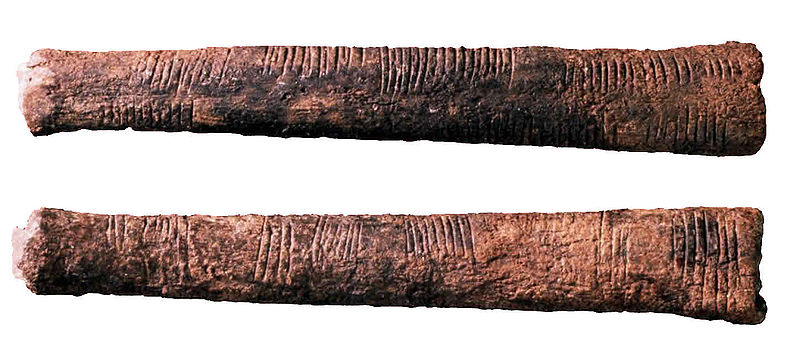How tallies can be used to represent numbers
Perhaps the simplest way of recording numbers, tallies can be thought of as a unary number system, i.e. counting in base 1. One mark or symbol is made or drawn for each thing being counted, for example, the number 5 would be represented as five marks or symbols.

Tallies have been around for a very long time, the earliest example being the Ishango bone found in the "Fisherman Settlement" of Ishango in the Democratic Republic of Congo. [wiki] It is a mammal bone with a large number of grouped marks cut into its sides made around 20,000 years ago, it is widely believed to be the first evidence of mathematical thinking in human evolution. The meanings of the marks is debated, but it seems to indicate some awareness of counting. [cite]
Tallies are often drawn in specific orientations and groupings, making them easily identifiable at a glance. You will probably be familiar with the ‘picket fence’ tally, 4 downward strokes, and a diagonal to finish a group of five. But did you know there are other ways of tallying?



